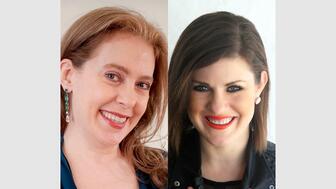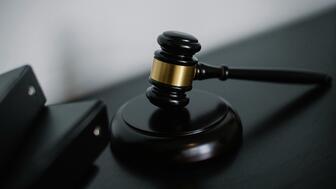The luxury goods company said founder Ippolita Rostagno will remain at the brand’s helm.
Do You Really Need to Drive More Prospects into Your Store?
Peter Smith says while the idea of increasing foot traffic isn’t without merit, it’s not necessarily the panacea some think it is.

Recently, I was speaking with an industry friend who suggested that one of the biggest challenges facing jewelers today is the need to drive more prospects into their stores.
His sentiment was neither unique nor without merit. There certainly has been a gradual decline in retail jewelry store foot traffic in recent years, even as higher average tickets have largely helped to offset the decline.
To believe, however, that getting more people to come into your store is the answer to growing your business can be a bit of a red herring.
Any business would, of course, love to have more potential customers. But the sheer cost in terms of both money and resources involved in increasing foot traffic—not to mention the challenge of guessing what media and messaging would be successful in doing so—might not be the best use of your time or money.
The single best opportunity to grow your business is to convert more of your prospects.
“Executing better on the factors you can control is a preferable strategy to building business, and closing more prospects, particularly at a higher average sale, is the best metric.”Other than having a broad and general “We’ve got to convert more” or “We need to train our people better,” I rarely hear of retailers prioritizing conversion as a strategic business objective, with clear goals and a path to success.
Yet, the rewards for doing so can be immense.
If you are converting three of 10 prospects currently, that means seven people are walking out of your store empty-handed.
Turning just one of those seven people into a customer can result in a 33 percent increase to your business. If you are currently closing two of 10 prospects, converting one of the eight who are not buying will grow your business by 50 percent.
In Mark Ryski’s excellent book, “Conversion: The Last Great Retail Metric,” he wrote: “Sales results are not a reliable proxy for customer experience, but customer conversion rate is. In fact, conversion rate is an excellent proxy for customer experience.”
As nebulous and elusive as marketing can be, even to the most sophisticated of retailers, executing better on the factors you can control is a preferable strategy to building business, and closing more prospects, particularly at a higher average sale, is the best metric.
Here are six controllables that might help you.
You can’t teach drive and you won’t be successful in sales without that essential trait. Hire for it.
2. Replace your fast-sellers.
The least-sexy part of buying is replacing best-selling products, yet it is also the single most important aspect of buying. Suppress your instincts to continually reinvent the product wheel and never, ever allow your best sellers to be out of stock.
3. Don’t overstock your cases.
The more you have, the less your customer sees. Allow your product to breathe and resist the temptation to load up your cases.
No matter how strongly you believe that your customer is best served by having more options, the evidence to the contrary is too strong to ignore. If you’re trying to be everything, you are nothing. Tell your story in a way that makes it easy for customers to understand.
4. Turn your store into a fun space.
Use contrast lighting, music and scent to create an exciting retail environment. Use full-length mirrors and have your people dress more Nordstrom than H&R Block.
If it doesn’t feel like an exciting environment for your people, it likely won’t for your customers either.
5. Have your employees wear your jewelry.
Insist that employees wear their favorite pieces of jewelry and don’t be afraid to go big. If I had a dollar every time I’ve heard people telling me about selling jewelry right off their bodies …
Save the excuses as to why you can’t do it and make it happen.
6. Invest in sales training.
Product training matters and should be an ongoing commitment in your store, but it never ceases to amaze me how little retailers invest in actual sales training.
Make sure your people know the basics of body language, the need for open-ended questioning, the importance of sales principles such as the contrast principle, the paradox of choice and regret avoidance. That’s the stuff that influences consumer behavior and will help your team to convert more of the prospects already in your store.
Again, I am not suggesting that retailers don’t need to invest money marketing, but the best opportunity to improve business is closer than we think—it is every one of those customers who walk out of your store empty-handed amid salespeople's quiet whispers of “That was great, she’ll be back,” or “He was just kicking tires. He wasn’t a real buyer.”
The Latest

Laura Burdese, who joined the Italian luxury brand in 2022, will take on the role in July.

The National Jeweler editors revisit the most noteworthy industry happenings and design trends from 2025.

How Jewelers of America’s 20 Under 40 are leading to ensure a brighter future for the jewelry industry.

Need a gift for the cat lover who has everything? Look no further than our latest Piece of the Week.


It purchased the “Grosse Pièce,” an ultra-complicated Audemars Piguet pocket watch from the ‘20s, for a record-breaking price at Sotheby’s.

The lab-grown diamond grower now offers custom engagement and fashion jewelry through its Kira Custom Lab Jewelry service.

Roseco’s 704-page catalog showcases new lab-grown diamonds, findings, tools & more—available in print or interactive digital editions.

Chandler got his start at Michelson Jewelers and has served as DCA president and CEO since 2001. He will retire at the end of the month.

The boutique is slated to open this week inside Terminal 8, offering pre-owned Rolex watches and more to international travelers.

Sponsored by Digital Monitoring Products

The special-edition egg pendant ingested in a New Zealand jewelry store was recovered after a six-day wait.

Associate Editor Natalie Francisco plays favorites with Piece of the Week, selecting a standout piece of jewelry from each month of 2025.

The “Love and Desire” campaign is inspired by the magic that follows when one’s heart leads the way, said the brand.

Two awardees will receive free tuition for an educational course at the Swiss lab, with flights and lodging included.

Berta de Pablos-Barbier will replace Alexander Lacik at the start of January, two months earlier than expected.

Sotheby’s held its first two jewelry sales at the Breuer building last week, and they totaled nearly $44 million.

Winners will receive free registration and lodging for its fourth annual event in Detroit.

Here are six ideas for making more engaging content for Instagram Reels and TikTok, courtesy of Duvall O’Steen and Jen Cullen Williams.

The honorees include a notable jewelry brand, an industry veteran, and an independent retailer.

Carlos Jose Hernandez and Joshua Zuazo were sentenced to life without the possibility of parole in the 2024 murder of Hussein “Sam” Murray.

Yood will serve alongside Eduard Stefanescu, the sustainability manager for C.Hafner, a precious metals refiner in Germany.

Set in a Tiffany & Co. necklace, it sold for $4.2 million, the highest price and price per carat paid for a Paraíba tourmaline at auction.

The jeweler’s “Deep Freeze” display showcases its iconic jewelry designs frozen in a vintage icebox.

Take luxury gifting to new heights this holiday season with the jeweler’s showstopping 12-carat sphene ring.

This year's theme is “Unveiling the Depths of the Ocean.”

In its annual report, Pinterest noted an increase in searches for brooches, heirloom jewelry, and ‘80s luxury.


























